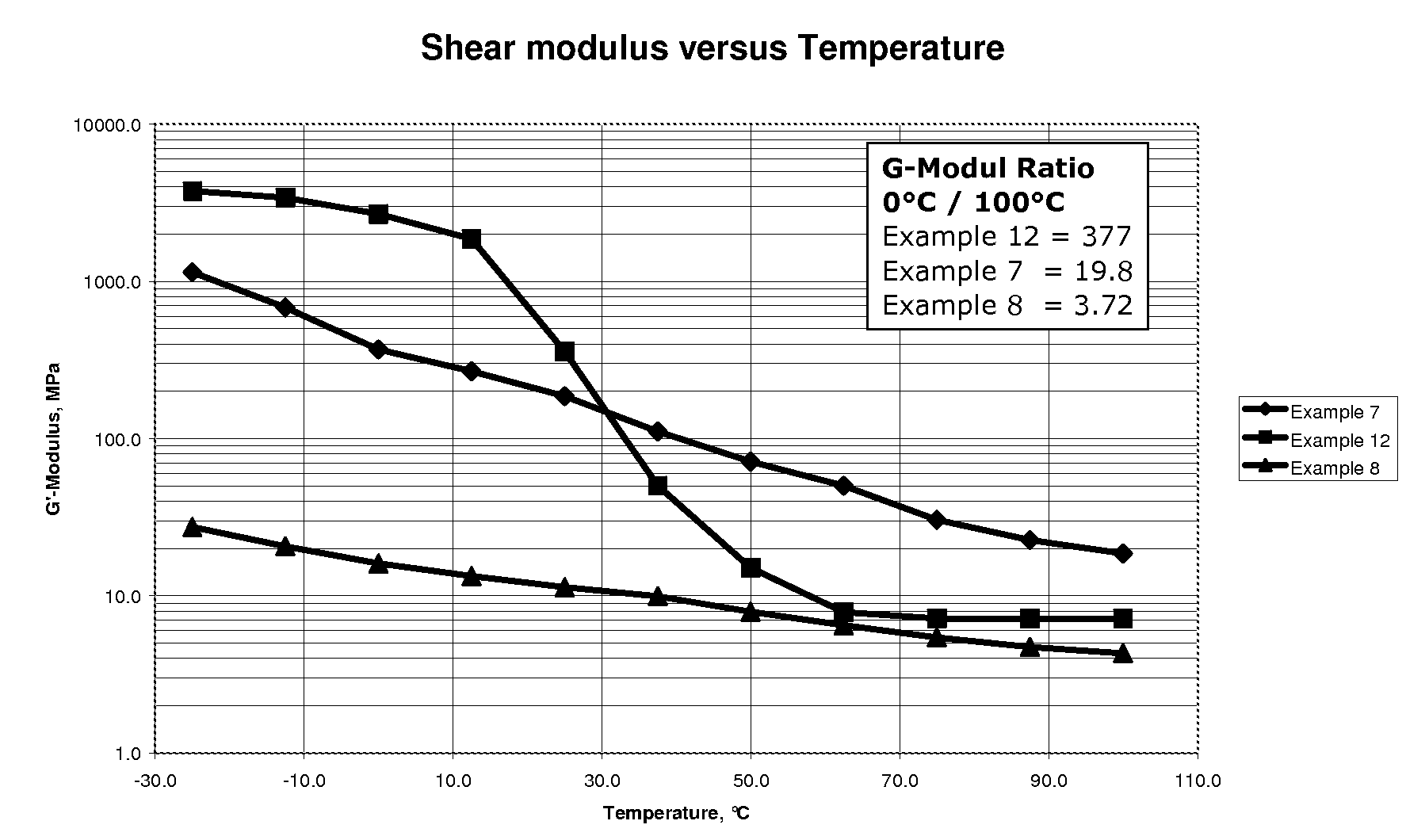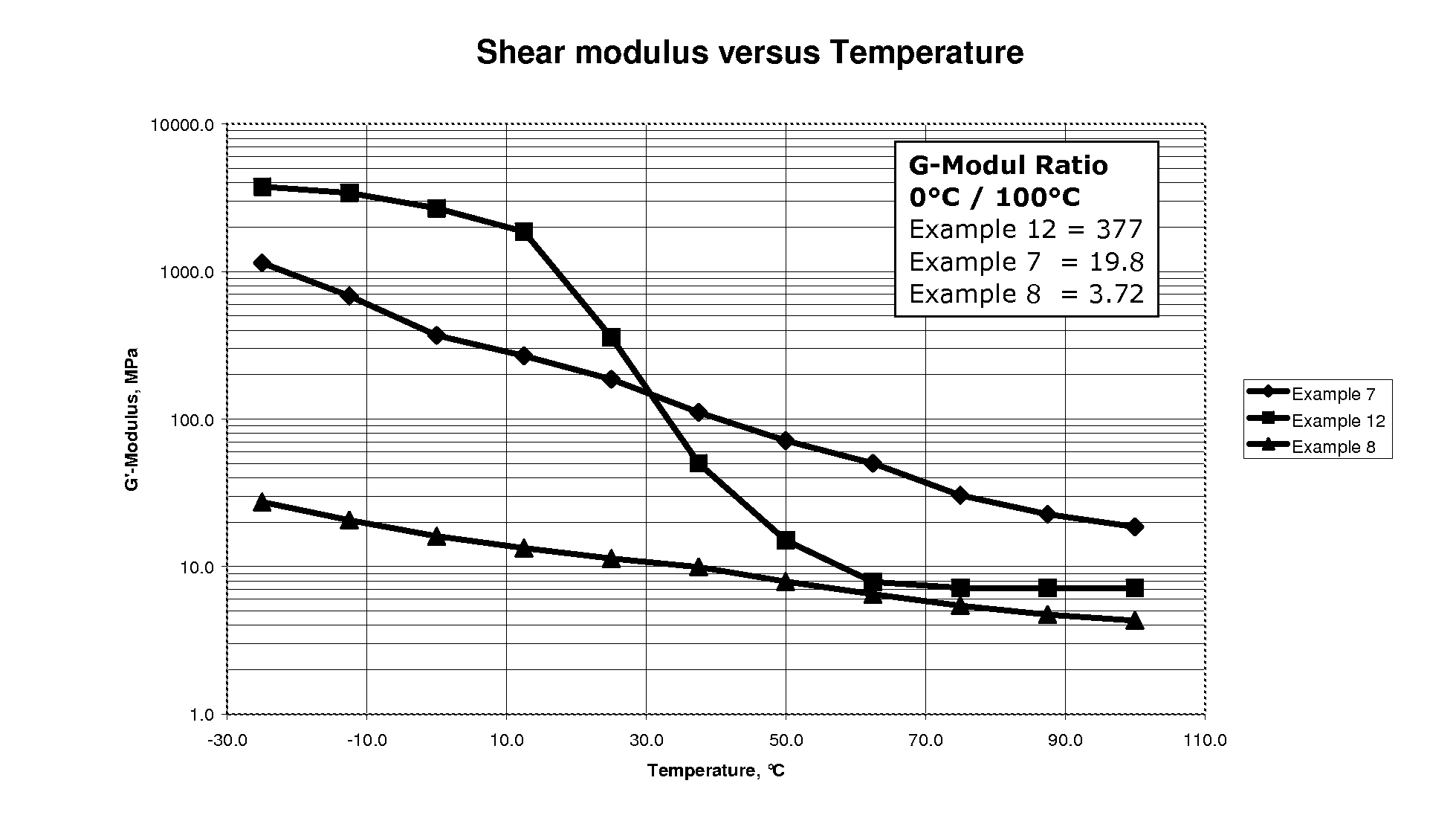Two part polyurethane curable composition having substantially consistent g-modulus across the range of use temperatures
a polyurethane and curable composition technology, applied in the field of two-part polyurethane adhesives, can solve the problems of reducing stiffness and g-modulus negatively, affecting the ability of the assembled structure to remain bonded, and adding steps and costs to the assembly of structures
- Summary
- Abstract
- Description
- Claims
- Application Information
AI Technical Summary
Benefits of technology
Problems solved by technology
Method used
Image
Examples
example 1
Preparation of the Polyether Based Isocyanate Containing Pre-polymer 1
[0060]300 g of molten pure 4,4′-Diphenylmethane diisocyanate (MDI) are weighed into a lab reactor at a temperature 50° C., 750 g of a polypropyleneoxide diol MW (molecular weight) 2,000 glycerine initiated propylene oxide having about 16 monomer units and 930 g of an ethylene oxide capped polypropyleneoxide triol (glycerine initiated (2 percent) (86 percent) propylene oxide with about 2 percent ethylene oxide end block, 26 to 30 monomer units) MW 4500 are added and the mixture is catalyzed with 6 g of a 0.5 percent tin-octoate solution in Di-isononyl phthalate. The reactor is kept at 70° C. for 1 hour, then 1014 g di-isononyl phthalate added. The resulting prepolymer exhibits an isocyanate content of 1.5 percent and a weight average molecular weight of approximately 6,500.
example 2
Preparation of the Polyether Based Isocyanate Containing Pre-polymer 2
[0061]1098 g of Polymeric MDI having a an average functionality of 2.7 and 888 g pure carbodiimide modified 4,4′-MDI are weighed into a lab reactor at a temperature 50° C., then 1014 g polypropyleneoxide diol MW 2000 (as described in Example 1) (70° C.) is added. The reactor is kept at 70° C. for 1 hour. The resulting prepolymer exhibits an isocyanate content of 18.5 percent.
example 3
Preparation of Component Al Resin Part
[0062]2130 g of prepolymer 2, 852 g talc, 15 g fumed silica and 3 g color paste are mixed in a planetary blender under vacuum at 60-80° C. for 1 hour. The finished blend is filled into water vapor proof cartridges.
PUM
| Property | Measurement | Unit |
|---|---|---|
| Fraction | aaaaa | aaaaa |
| Percent by mass | aaaaa | aaaaa |
| Percent by mass | aaaaa | aaaaa |
Abstract
Description
Claims
Application Information
 Login to View More
Login to View More - R&D
- Intellectual Property
- Life Sciences
- Materials
- Tech Scout
- Unparalleled Data Quality
- Higher Quality Content
- 60% Fewer Hallucinations
Browse by: Latest US Patents, China's latest patents, Technical Efficacy Thesaurus, Application Domain, Technology Topic, Popular Technical Reports.
© 2025 PatSnap. All rights reserved.Legal|Privacy policy|Modern Slavery Act Transparency Statement|Sitemap|About US| Contact US: help@patsnap.com



